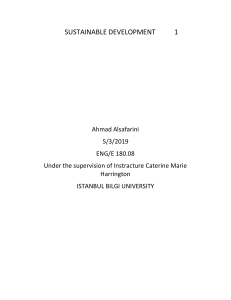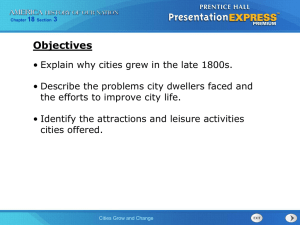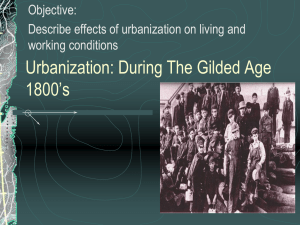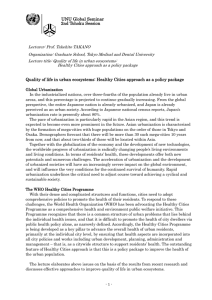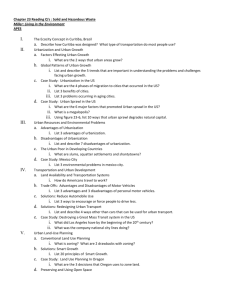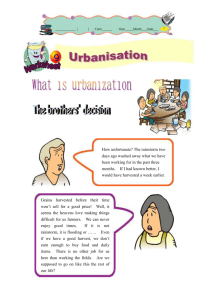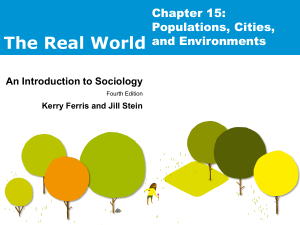Greenhouse gases are accumulating in Earth`s atmosphere as a
advertisement
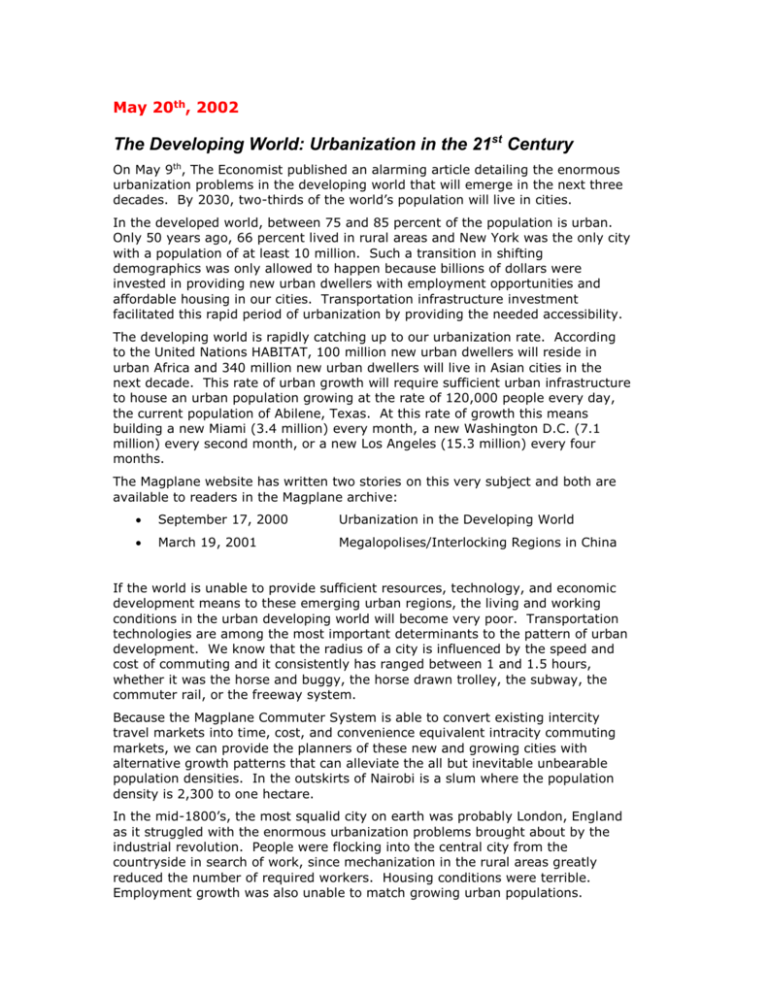
May 20th, 2002 The Developing World: Urbanization in the 21st Century On May 9th, The Economist published an alarming article detailing the enormous urbanization problems in the developing world that will emerge in the next three decades. By 2030, two-thirds of the world’s population will live in cities. In the developed world, between 75 and 85 percent of the population is urban. Only 50 years ago, 66 percent lived in rural areas and New York was the only city with a population of at least 10 million. Such a transition in shifting demographics was only allowed to happen because billions of dollars were invested in providing new urban dwellers with employment opportunities and affordable housing in our cities. Transportation infrastructure investment facilitated this rapid period of urbanization by providing the needed accessibility. The developing world is rapidly catching up to our urbanization rate. According to the United Nations HABITAT, 100 million new urban dwellers will reside in urban Africa and 340 million new urban dwellers will live in Asian cities in the next decade. This rate of urban growth will require sufficient urban infrastructure to house an urban population growing at the rate of 120,000 people every day, the current population of Abilene, Texas. At this rate of growth this means building a new Miami (3.4 million) every month, a new Washington D.C. (7.1 million) every second month, or a new Los Angeles (15.3 million) every four months. The Magplane website has written two stories on this very subject and both are available to readers in the Magplane archive: September 17, 2000 Urbanization in the Developing World March 19, 2001 Megalopolises/Interlocking Regions in China If the world is unable to provide sufficient resources, technology, and economic development means to these emerging urban regions, the living and working conditions in the urban developing world will become very poor. Transportation technologies are among the most important determinants to the pattern of urban development. We know that the radius of a city is influenced by the speed and cost of commuting and it consistently has ranged between 1 and 1.5 hours, whether it was the horse and buggy, the horse drawn trolley, the subway, the commuter rail, or the freeway system. Because the Magplane Commuter System is able to convert existing intercity travel markets into time, cost, and convenience equivalent intracity commuting markets, we can provide the planners of these new and growing cities with alternative growth patterns that can alleviate the all but inevitable unbearable population densities. In the outskirts of Nairobi is a slum where the population density is 2,300 to one hectare. In the mid-1800’s, the most squalid city on earth was probably London, England as it struggled with the enormous urbanization problems brought about by the industrial revolution. People were flocking into the central city from the countryside in search of work, since mechanization in the rural areas greatly reduced the number of required workers. Housing conditions were terrible. Employment growth was also unable to match growing urban populations. During this time, there lived two men whose work we are all familiar. The poverty of London inspired Charles Dickens (1812-1870) to write his classics where poverty and the ruling class were a consistent theme. At the same time, when Karl Marx (1818-1883) arrived in London in 1849, he too was influenced by the conditions of the urban poor when he founded the "International Working Men's Association" in 1864 and published "Das Kapital" three years later. There is growing concern in international circles whether future urban conditions will also ferment new urban and national unrest in the developing world if their cities are unable to cope with growing urban populations. Source: The Brown Revolution, The Economist, May 9th, 2001
